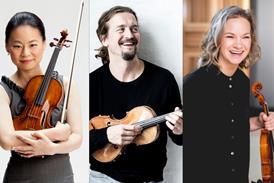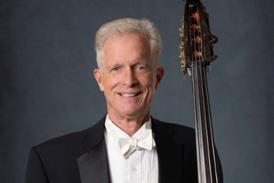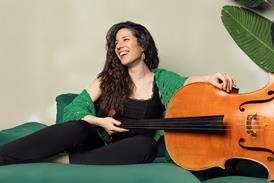Ariane Todes is impressed by the openness of luthiers at the makers' workshops in Oberlin
String players might know the sleepy little university town of
Oberlin, Ohio, for its conservatoire. Little do they know that
during the summer months, some of the top violin and bow makers
around the country, and the world, migrate with their workbenches
to the art studios there, with one main aspiration: knowledge. And
I’m just back from my trip there with the same objective, for an
article for our November issue.
The principle is simple – put people who know something about
something in violin or bow making in a room together, give them a
project to work on, and watch how the overall knowledge of the
system increases exponentially, whether it’s relatively novice
makers or senior members of the community discovering new ways to
hold a gouge or learning about modal analysis. It’s not surprising
that this hotbed of research and sharing has been widely credited
for the healthy state of violin making today.
There are sessions to attend (a particularly popular one being the
slideshow of CT scans of top instruments showing enough intimate
detail to have the crowd salivating), alongside the group project
of working on copies of the ‘Betts’ Stradivari or a Tourte bow. The
most heated and revelatory discussions often seemed to happen over
breakfast, at the communal cooking sessions, or during a 1am break
outside the studio. Many times I felt truly awed by the profundity
of violin geekdom here, and by the way each luthier has their very
own specific emphasis in their work and their obsession for
instruments, be it acoustical measurement, purfling, wood density,
varnish, or finding the perfect stones with which to antique
instruments.
One of the questions we debated over breakfast was how today’s
violin makers can market themselves to get beyond the popular
appeal of Stradivari and his friends. As I left, my mind buzzing
with new information about violin making and a renewed sense of
respect for the commitment of these makers, I wondered whether the
answer is right there in Oberlin. If players could see and
experience first hand some of the passion and expertise that goes
into creating instruments, and learn the fundamentals of what
luthiers try to achieve, whether acoustically, technically or
aesthetically, would they be more likely to believe in the
possibilities of modern instruments?
Oberlin’s success lies in opening up a circle of knowledge where
once people would have been excluded and secrets kept. For all the
conventions and makers’ days I’ve been to, I’ve never yet come
across a place where players are truly included in this circle and
I wonder if this could ever be practical. Maybe it’s time that
players did know about what goes on in Oberlin after
all.
Find out more about the Oberlin workshops in the November 2012
issue of The Strad, available to download
here.































No comments yet